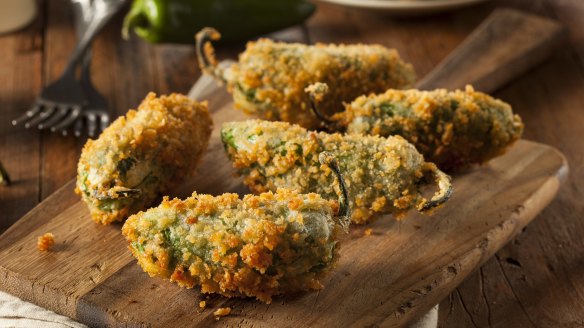What can you do with jalapeno peppers?

My neighbour is a good vegetable gardener and has given me a load of jalapeno peppers. How do I know if they are hot and what should I do with them? K. Lawrence
I was working in Mexico on a book a few years back. One of the food experts we were working with said, "chillies are not about heat, they should be about flavour". He showed us how he tempered the power of the chillies by removing the seeds and just enough of the placenta, or the pithy membrane holding the seeds, to get a kick out of the chillies but not send the diner to hospital. That is where the majority of the hot compound called capsaicin is stored – the seeds and their placenta. This is nature's pest repellent. We humans just happen to love the endorphin buzz that chilli heat gives us.
Mexican chilli peppers are named after their hometown. Habaneros are named after Havana, poblano peppers come from Pueblo and jalapenos originate in Jalapa, also spelled Xalapa. Jalapenos' heat can range from mild to hot depending on the variety. Jalapenos with brown circular lines, known in the chilli business as "corking", tend to have more heat because the growing conditions that give rise to corking also cause hotter chillies.
Before starting with a new variety of chilli, I recommend you remove all the seeds and placental membrane before preparing them. You can always add them back if you want a hotter dish.
Try jalapenos in a bright green sauce by blitzing four chopped and deseeded jalapenos with the juice of two limes, two peeled garlic cloves and a bunch of coriander in a food processor with half a cup of extra virgin olive oil and a pinch of salt. Great on grilled veg, fish and chicken.
Or, slice a jalapeno lengthways, deseed, place a strip of block mozzarella inside, roll in egg wash and then in panko crumbs, repeat and deep fry in oil at about 160C. Great with a cold beer.
Why is butter darker on the outside of the block compared with the inside? L. Owens
This is oxidation. Oxygen in the atmosphere has reacted with the unsaturated fatty acids in the butter, which causes the butter to take on a darker hue. The effect is accelerated by light and heat. The dairy industry calls this "primrosing". It is far less common these days after the butter processors moved from permeable paper wrapping to plastic-lined aluminium wrapping a decade or so ago. Some cheaper brands continue to use paper wrappers. This discoloration is often associated with a rancid taste. While this is not perfect for cooking or buttering toast, rancidity is not harmful. To keep butter fresh, wrap it in an airtight wrapper, such as its foil wrapper, and keep it in the fridge.
I sometimes get a rash when harvesting or preparing figs but other times not. What is going on? P. Naidu
The sap of figs and their leaves contains a group of enzymes called furocoumarins. They protect the plant from fungal attack. These enzymes won't hurt your skin unless the affected patch of skin is then exposed to UV from sunlight. The resulting condition is called phytophotodermatitis, phyto for plant, photo for light and dermatitis being the skin condition caused by the two. If you get the sap on your skin, wash it off, and wear gloves when handling sappy figs.
Send your vexing culinary conundrums to brainfood@richardcornish.com.au or tweet to @foodcornish
Appears in these collections
- More:
- Food
- Brain food
